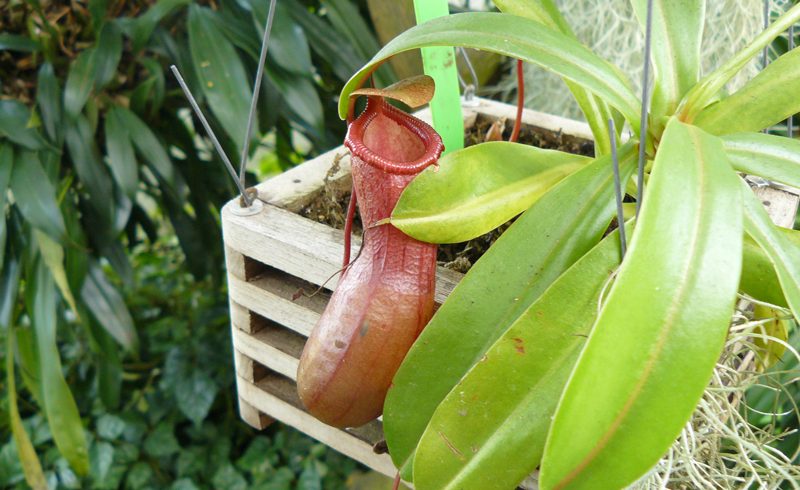Are plants intelligent – was once a million dollar question. But not so any more. Now three are evidences that like human being or animals, plants also have intelligence. Research is going on and also have established that plants have their innate sense to attract pollinators or reproduce and protect themselves from predators or to get sunlight for their growth and development. A book “Brilliant Green: the Surprising History and Science of Plant Intelligence, by plant neurobiologist, Stefano Mancuso and journalist, Alessandra Viola, attracted worldwide attention.
Not only are chimpanzees, dolphins and elephants think, feel and personality-driven beings, but many others are as well. Octopuses can use tools, whales sing, bees can count, crows demonstrate complex reasoning, paper wasps can recognise faces and fish can differentiate types of music. All these examples have one thing in common: they are animals with brains. But plants don’t have a brain. How can they solve problems, act intelligently or respond to stimuli without a brain?
Charles Darwin, who studied plants meticulously for decades, was one of the first scientists to break from the crowd and recognise that plants move and respond to sensation – i.e., are sentient. Moreover, Darwin – who studied plants meticulously for most of his life, observed that the radicle – the root tip – “acts like the brain of one of the lower animals.”Plants have to find energy, reproduce and stave off predators. To do these things, Mancuso argues, plants have developed smarts and sentience. “Intelligence is the ability to solve problems and plants are amazingly good in solving their problems,” Mancuso noted.
Pinguicula casabitoana is the only carnivorous plant native to the Dominican Republic. It is found on one particular ridge on Mount Casabito, this insect-eating plant is one of the rarest carnivorous plants on the planet. To solve their energy needs, most plants turn to the sun – in some cases literally. Plants are able to grow through shady areas to locate light and many even turn their leaves during the day to capture the best light. Some plants have taken a different route, however, supplying themselves with energy by preying on animals, including everything from insects to mice to even birds. The Venus flytrap may be the most famous of these, but there are at least 600 species of animal-eating flora. In order to do this, these plants have evolved complex lures and rapid reactions to catch, hold and devour animal prey.
Plants also harness animals in order to reproduce. Many plants use complex trickery or provide snacks and advertisements (colours) to lure in pollinators, communicating either through direct deception or rewards. New research finds that some plants even distinguish between different pollinators and only germinate their pollen for the best. Plants have also evolved an incredible variety of toxic compounds to ward off predators. When attacked by an insect, many plants release a specific chemical compound. But they don’t just throw out compounds, release the precious chemical only in the leaf that’s under attack. Plants are both tricky and thrifty. Humans have five basic senses. But scientists have discovered that plants have at least 20 different senses used to monitor complex conditions in their environment. According to Mancuso, they have senses that roughly correspond to our five, but also have additional ones that can do such things as measure humidity, detect gravity and sense electromagnetic fields. Plants are also complex communicators. Today, scientists know that plants communicate in a wide variety of ways. The most well known of these is chemical volatiles – why some plants smell so good and others awful – but scientists have also discovered that plants also communicate via electrical signals and even vibrations. “Plants are wonderful communicators: they share a lot of information with neighbouring plants or with other organisms such as insects or other animals. The scent of a rose, or something less fascinating as the stench of rotting meat produced by some flowers, is a message for pollinators.” Many plants will even warn others of their species when danger is near. If attacked by an insect, a plant will send a chemical signal to their fellows. Researchers have even discovered that plants recognize their close kin, reacting differently to plants from the same parent as those from a different parent.
“In the last several decades science has been showing that plants are endowed with feeling, weave complex social relations and can communicate with themselves and with animals,” write Mancuso and Viola, who also argue that plants show behaviours similar to sleeping and playing. The key to plant intelligence is in the radicle or root apex. Mancuso and colleagues recorded the same signals given off from this part of the plant as those from neurons in the animal brain. So, instead of a single powerful brain, Mancuso argues that plants have a million tiny computing structures that work together in a complex network, which he compares to the Internet. The strength of this evolutionary choice is that it allows a plant to survive even after losing 90% or more of its biomass. At the same time, we don’t even know for certain how many plant species exist on the planet. Presently, scientists have described around 20,000 species of plant. But there are probably more unidentified than identified.
We depend on plants not only for many of our raw materials and our food, but also for the oxygen we breathe and, increasingly it seems, the rain we require. Plants drive many of the biophysical forces that make the Earth habitable for humans – and all animals. “Sentient or not sentient, intelligent or not, the life of the planet is green…The life on the Earth is possible just because plants exist,” said Mancuso. “Is not a matter of preserving plants: plants will survive. The conservation implications are for humans: fragile and dependent organisms.”
Michael Pollan, author of books as “The Omnivore’s Dilemma” and “The Botany of Desire,” says plants have all the same senses as humans. In addition to hearing, taste, they can sense gravity, the presence of water, or even feel that an obstruction is in the way of its roots, before coming into contact with it. They don’t have nerve cells like humans, but they do have a system for sending electrical signals and even produce neurotransmitters, like dopamine, serotonin and other chemicals the human brain uses to send signals. “Plants can do incredible things. They do seem to remember stresses and events, like that experiment. They do have the ability to respond to 15 to 20 environmental variables,” Pollan says. Plant roots shift direction to avoid obstacles. Mimosa is a plant, which collapses its leaves temporarily when it is disturbed. So Gagliano set up a contraption that would drop the mimosa plant, without hurting it. When the plant dropped, as expected, its leaves collapsed. She kept dropping the plants every five to six seconds. After five or six drops, the plants would stop responding, as if they’d learned to tune out the stimulus as irrelevant.
So, next time when you are gardening or planting trees, do so with love and warmth, you can talk to them, sing to them. May be that the reason why some people have green hand and some not. What about you ?
Author: Chandana Choudhury Barua
Professor, Department of Pharmacology
College of Veterinary Science, Khanapara,
Guwahati. Email chanacin@gmail.com




